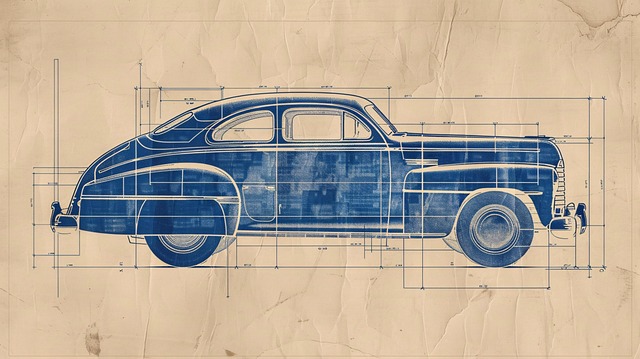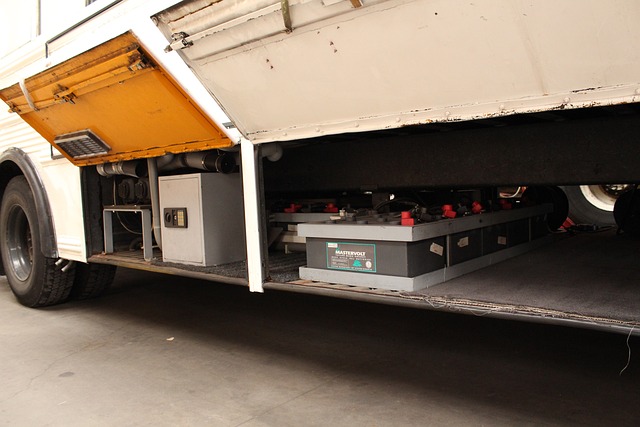Looking to register your car in California? This comprehensive guide breaks down the process step-by-step, ensuring a smooth transition. From understanding the basic requirements to navigating the crucial VIN verification, you’ll learn what documents are needed and how to prepare. We’ll walk you through each phase, from initial checks to completing registration, making it easy to follow in California’s car registration process. Don’t miss essential tips on conducting effective VIN verification.
- Understanding the California Car Registration Process
- Preparing for VIN Verification: What You Need to Know
- Steps Involved in Conducting a Vehicle Identification Number (VIN) Check
- Gathering Necessary Documents for California Car Registration
- After VIN Verification: Completing Your California Car Registration
Understanding the California Car Registration Process

Understanding the California Car Registration Process begins with recognizing that it involves several crucial steps. The first step is to ensure your vehicle’s VIN (Vehicle Identification Number) is verified through a process known as VIN inspection or, alternatively, by using a mobile vin verifier. This is essential for confirming ownership and checking for any brand-specific recalls or issues. Once the VIN verification is complete, you’ll need to gather necessary documents, including proof of ownership, vehicle registration forms, and valid identification.
After gathering these documents, you can proceed with submitting an application at a local California Department of Motor Vehicles (DMV) office or through their online portal. The process may include additional requirements like passing a smog test depending on your vehicle’s age and emissions standards. A mobile vin verifier can assist in streamlining this process by providing instant results and guidance, ensuring that your car registration is completed smoothly and efficiently.
Preparing for VIN Verification: What You Need to Know

Preparing for VIN verification is a crucial step in registering your car in California. The Vehicle Identification Number (VIN) is a unique code that identifies your vehicle, and it’s essential for several processes, including registration and insurance claims. Before you head to the DMV, gather all the necessary documents related to your car, such as the title, registration papers, and proof of insurance. Additionally, ensure you have your vehicle’s VIN readily available—you can find it on the driver’s side door jamb or in the car’s owner’s manual.
For a seamless experience, consider using mobile VIN verification services. These services offer convenient alternatives to traditional DMV visits by allowing you to complete the VIN check remotely. A mobile VIN inspector will visit your location and conduct the necessary checks using specialized equipment. This option is particularly useful if you have a busy schedule or face challenges with transportation. With the help of these modern tools, you can streamline the registration process and hit the California roads faster.
Steps Involved in Conducting a Vehicle Identification Number (VIN) Check

Conducting a Vehicle Identification Number (VIN) check is a crucial step in the car registration process in California. It’s the first and most vital verification done to ensure the vehicle’s authenticity and history are as represented by the seller or current owner. The VIN, a unique 17-character code, is found on various parts of the vehicle like the dashboard, engine block, and door frame. To perform this check, you’ll need either an official California Department of Motor Vehicles (DMV) form or a mobile vin verifier app for accurate and instant results.
The process involves entering the VIN into a database, which could be the DMV’s online system or a third-party service. This search provides detailed information about the vehicle, including its manufacturing date, make, model, and even accident history if any. For a more convenient approach, many mobile vin inspection apps are available that enable you to conduct this check while on the go. These tools not only simplify the process but also offer real-time updates, making it easier for both buyers and sellers to verify a vehicle’s status before finalising a deal.
Gathering Necessary Documents for California Car Registration

Before you start the registration process, ensure you gather all the essential documents required by the California Department of Motor Vehicles (DMV). One crucial step is to verify your vehicle’s unique identifier—the Vehicle Identification Number (VIN). This process, often facilitated through a mobile vin verification or vin inspection, establishes the car’s authenticity and ownership history. Have your vehicle’s registration certificate from the previous state ready, as well as any evidence of title transfer if applicable.
Don’t forget to bring valid identification documents such as a driver’s license or passport. Additionally, you’ll need proof of insurance, which can often be combined with your registration application. These preparations will streamline the registration process at a DMV office, making it faster and easier for both new and existing California residents.
After VIN Verification: Completing Your California Car Registration

After successful VIN verification, the next step in registering your car in California is to complete the registration process. You’ll need to gather essential documents and visit a DMV office or use their online services to submit your application. This typically involves providing proof of ownership, insurance, and identity, along with paying the necessary fees.
A mobile VIN verifier can simplify this process by ensuring your vehicle’s history is accurate and up-to-date before you begin. This saves time and effort compared to traditional methods, including a manual VIN inspection. By leveraging technology, you can streamline the registration experience, making it more efficient for both you and the California DMV.
Registering a car in California involves several crucial steps, from understanding the process to completing the VIN verification and gathering essential documents. By following these guidelines, you can ensure a smooth registration experience. Remember, accurate and up-to-date information is key, so always refer to official sources for the most current requirements. Once your vehicle passes the VIN check, you’ll be well on your way to legal California car ownership.
